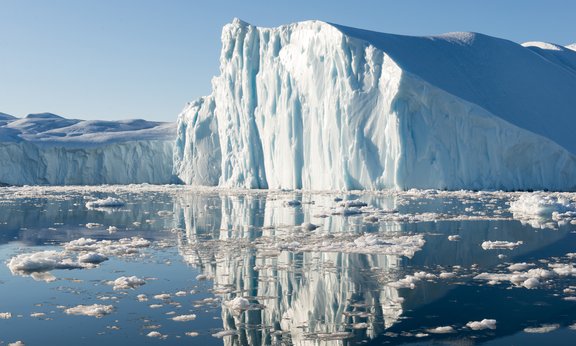In a new study, scientists from the CLOUD experiment investigated how iodic acid (HIO3) and iodous acid (HIO2) – the iodine oxoacids – react with sulfuric acid. It turned out that iodine oxoacids greatly increase the rate of formation of sulfuric acid particles. In previous experiments, it was found that the formation of sulfuric acid particles in large parts of the atmosphere is limited by the availability of ammonia, which has a stabilizing effect for embryonic particles against evaporation.
Measurements at the polar ice caps and over the world's oceans now show that iodine oxoacids, which are formed in the atmosphere from iodine vapors emitted at those areas, accelerate the formation rate of sulfuric acid particles by a factor of 10 to 10,000 at a concentration between 0.1 and 5, relative to sulfuric acid. Two mechanisms are responsible for this enhancement: For one, iodous acid substitutes for ammonia to stabilize sulfuric acid particles. Furthermore, iodic acid facilitates the formation of negatively-charged sulfuric acid clusters. Quantum chemical calculations confirm this synergy between iodine oxoacids and sulfuric acid and predict nucleation rates that agree well with the measurements of the CLOUD experiment. This nucleation accelerates the formation of aerosols and clouds.
CLOUD is an alliance of scientists from 17 institutes in nine countries who investigate various processes in the atmosphere using a combination of field tests, aerosol and climate models, chemical calculations, and laboratory measurements. The team led by Armin Hansel from the Institute of Ion Physics and Applied Physics at the University of Innsbruck is also involved in the experiment and is developing high-precision measurement methods. PhD students Wiebke Scholz and Bernhard Mentler in Armin Hansel's research group were co-authors of the new publication in the renowned journal Science.
The importance of aerosol particles for the climate.
The study provides new insights to better understand the climate. On the one hand, aerosol particles have a cooling effect by reflecting sunlight directly back and enabling the formation of clouds, which also reflect sunlight back. In the polar regions, on the other hand, an increase in aerosols and low-lying clouds has a warming effect, as they reflect the long-wave radiation emitted by polar ice back to the surface, thus accelerating the melting of the ice caps. More than half of the aerosol particles, which act as cloud condensation nuclei (CCN) and thus control cloud coverage, are created by new particle formation from condensable trace vapors - the so-called nucleation. Sulfuric acid, which is produced in the atmosphere by oxidation of sulfur dioxide, plays an important role here.
Since the Industrial Revolution, emissions from sulfur containing fossil fuels have increased CCN numbers and, subsequently, cloud coverage.
The new study now shows that iodine oxoacids play an important role over the world's oceans and poles, as they can act synergistically with sulfuric acid and nucleate particles even in the absence of ammonia.
This finding is also crucially important because global iodine emissions have tripled in the last 70 years through human activities. This is due to thinning of sea ice and rising ozone concentrations. As a result, aerosols and cloud formation are increasing worldwide, leading to a positive feedback effect in the polar regions that accelerates the loss of sea ice. At the same time, there is a cooling effect due to negative radiative forcing at lower latitudes.
However, these factors are currently receiving too little attention in climate research. The results of the new CLOUD paper show that current climate models significantly underestimate the formation rates of sulfuric acid particles in marine and polar regions and that these must be integrated in the future to improve their accuracy.

